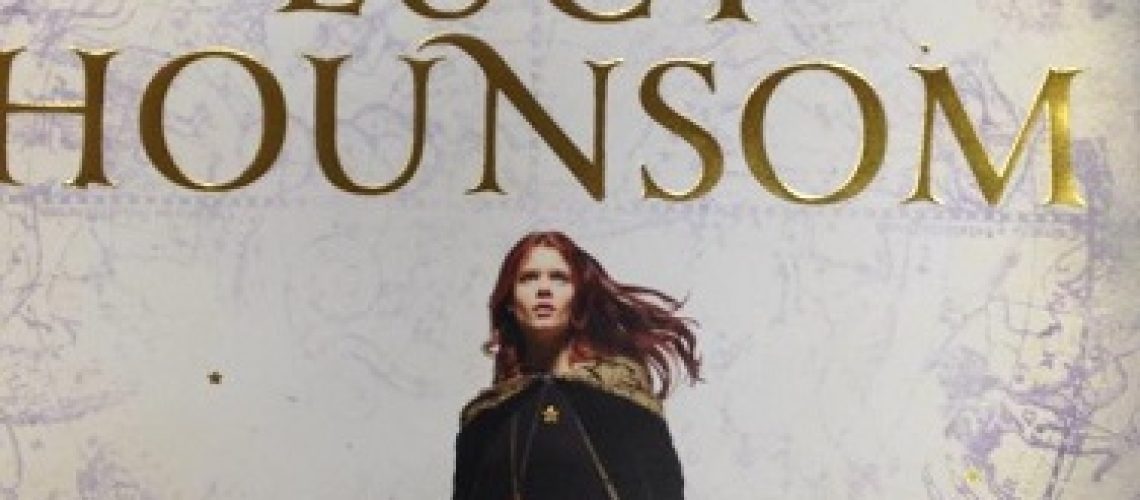Kyndra is a seemingly ordinary young woman in a nondescript village in the mountains. Her mother runs an inn, and is a sometimes hard woman, even on the day of Kyndra’s Ceremony. This village does have something unusual in it — an ancient artifact, which, when invoked, will tell you your true name and your future. For decades, as children of the town have come of age, the artifact has guided them to their life and future. When Kyndra is presented to the artifact in her Ceremony, however, the artifact unexpectedly breaks, setting in motion events that will send Kyndra across the continent, and to her true destiny. An initially traditional seeming epic fantasy protagonist and world evolve into a much more nuanced and complex tale in Lucy Hounsom’s debut epic fantasy novel, Starborn.
 Years ago, epic fantasy novels such as Robert Jordan’s The Eye of the World began with a pastoral opening reminiscent of Tolkien’s The Shire. The opening of Starborn, and the revelation of secret, unknown power on the part of the protagonist, Kyndra, is reminiscent of classic epic fantasy in the mold of Robert Jordan. As in The Eye of the World, Kyndra is soon swept away from her little village by strangers, who take her into the wider world, to find her destiny and her arcane heritage. Kyndra is to be brought to Naris, a citadel where her powers, powers that have been mostly out of sight of the world for an entire era, will be tested, measured and taught.
Years ago, epic fantasy novels such as Robert Jordan’s The Eye of the World began with a pastoral opening reminiscent of Tolkien’s The Shire. The opening of Starborn, and the revelation of secret, unknown power on the part of the protagonist, Kyndra, is reminiscent of classic epic fantasy in the mold of Robert Jordan. As in The Eye of the World, Kyndra is soon swept away from her little village by strangers, who take her into the wider world, to find her destiny and her arcane heritage. Kyndra is to be brought to Naris, a citadel where her powers, powers that have been mostly out of sight of the world for an entire era, will be tested, measured and taught.
If the novel followed along these lines without variation, Starborn would be a relatively timeworn book in that tradition, well written but not really distinctive. Shopworn tropes and ideas, any reader who has read a decent helping of Epic Fantasy has seen them before, in authors ranging from Terry Brooks to David Eddings to Sara Douglass to Robert Jordan to Margaret Weis. You, reader, probably have read many such novels, and know their shape well. The author, however, has ideas far beyond simple emulation of 1980s and ’90s epic fantasy. Kyndra is a young and callow protagonist growing into her power, true. But she is conflicted about herself and her power, often self-centered, complicated in her emotions and feelings, and in general far removed from the generic blank template farm boy that you might expect in a fantasy such as this.
The journey across the landscape is another trope in epic fantasy that the author employs, and then subverts. Rather than simply a hitting-the-sights-across-the-landscape sort of progress long criticized by Diana Wynne Jones’ Tough Guide to Fantasyland, Kyndra’s journey to Naris is not an easy one, exposing tensions, rifts, and intrigue within and without the denizens of the Citadel. And once Kyndra is there, the very dark underbelly of the citadel, its creators, and the secret of its origins and future, and Kyndra’s part in it, very much break the mold of that traditional epic fantasy. The deeper one gets into the novel, the more the subversion and upending of that surface resemblance to the bog-standard epic fantasy of yore gets upended.
Speaking about Kyndra’s story and the revelations of what is going on the world is difficult to do without being too spoilery, and really, the veils being pulled back on what is going on, and what the author has constructed, is, for me, truly one of the pleasures of the book. Suffice it to say that the world as Hounsom initially depicts, from that little village, is definitely not the entire story of what the world is, and what is happening. Kyndra’s journey in revealing what is going on goes hand in hand with the reader learning at the same time. It braids together wonderfully well, and both leaves the story at a solid ending point and provides a wide opening for the sequel.
Starborn is an interesting, intriguing epic fantasy debut that slowly and inexorably pulls the rug out from the reader’s expectations of a traditional narrative and in so doing creates a memorable protagonist, and story.







